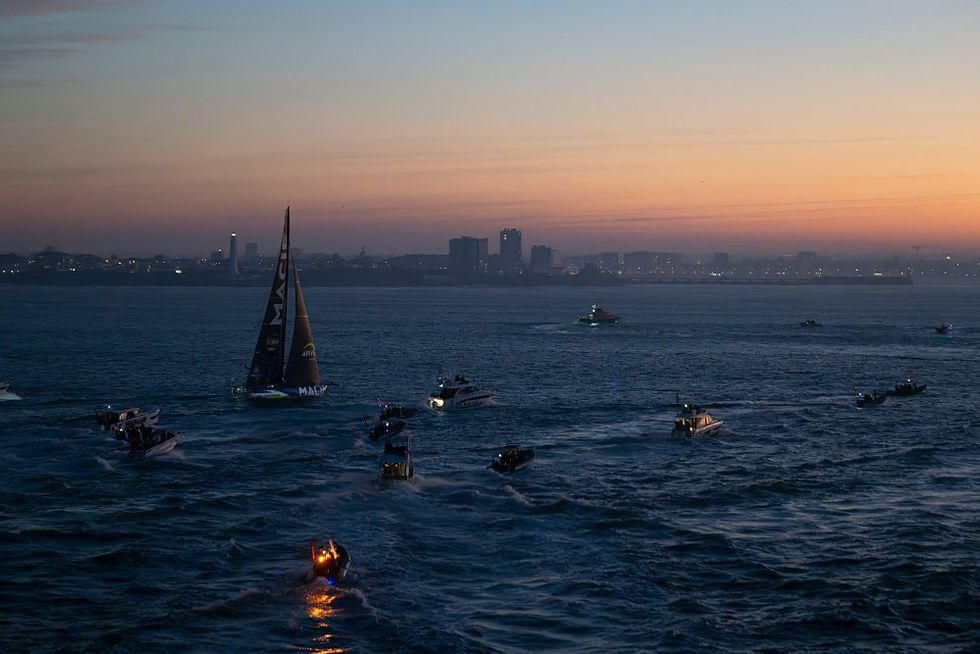The Home of Golf: St. Andrews
- Chloe Belga

- Apr 20
- 4 min read
On the rugged and overcast coast of Fife, adorned in ancient ruins and abundant greenery, lies the first ever golf course: St Andrews Old Course. Whether or not golf was actually born in St Andrews specifically is left uncertain, but we do know that it originated in the region, and that the Old Course is indeed the oldest course. I’ll admit that I didn’t care for nor knew much about golf before visiting St Andrews. My love for the highlands, however, has truly expanded my perspective.

Old Course, photo provided by author.
You could say it all began in 1123 when King David I’s charter allowed for the Links to become common land for the townspeople of St Andrews. The first written trace we have of golf is from a statute which bans the sport, considering it a national threat. King James II of Scotland believed that golf was becoming too popular, distracting young men from archery and thus affecting their national defense. Succeeding monarchs maintained the ban until King James IV just couldn’t help it—he really loved golf—and, in 1502, lifted the ban to become a golfer.
The shared use of the Links, however, didn’t give the golfers as much control over the land as they would have liked. Because of bankruptcy, the town council opted to sell the Links to rabbit breeders Charles and Cathcart Dempster in 1799. This set the stage for the Rabbit Wars, fought between rabbit farmers and golfers. In 1821, James Cheape of Strathtyrum ended the wars, buying the Links to save the golfers! Hooray! Thus began the true prosperity of St Andrews golfing. By the mid 1800s, golf tourism spread all throughout Britain as transportation was increasingly practical and the sport became suitable for summer—indeed, it was primarily a winter game until mechanical grass cutters permitted summertime use of the courses. Later, in 1893, the heroic James Cheape sold the Links to the Royal and Ancient Golf Club of St Andrews. Nonetheless, the town council managed to petition for Parliament to retain common ownership of the Links, and, after several Acts of Parliament, the Links Trust ultimately took control of the Links and still control it to this day.

Old Course, photo provided by author.
Moreover, this Royal and Ancient Club was formed in 1754 by twenty-two noblemen and gentlemen at St Andrews, originally named the Society of St Andrews Golfers, but became the Royal and Ancient Club in 1834. In the late 1800s, it was the sole authority on rules of golf in the U.K. and Commonwealth. In 1919, it took over management of the Open Championship, one of the oldest and most recognized golf tournaments. St Andrews has, moreover, become the most frequent host of the Open Championship, having hosted it thirty times since its foundation, most recently in 2022, and will be hosting it again in 2027.
The Old Course also contributed to the development of the sport as we now know it. It originally had twelve holes, resulting in a round of twenty-two holes total as ten were played twice. Captain William St Clair of Roslin declared that it would be improved if the first four holes (equivalent to the last four holes), which were too short, were to be merged into two holes, thereby producing the familiar eighteen-hole golf course (although in a format of ten holes in which eight were played twice). The eighteen-hole round with nine holes out and nine holes back is the current standard. The Old Course also used to be played clockwise. Players would start on the first and continue with what we now see as the seventeenth green. However, Thomas Mitchell Morris (more commonly known as Old Tom Morris, or the Grand Old Man of Golf) was the first to separate the first and seventeenth, which brought forth the chance to play counterclockwise as it is done today. Yet, playing clockwise, which is now called playing in reverse, still persists! On the Saturday closest to St Andrews Day (30 November), members are allowed to play in reverse on the Old Course. How exciting.

Statue of Tom Morris, photo provided by Tom Morris.
Although the Old Course is globally renowned, there are more courses in St Andrews. Old Tom Morris designed the New Course in 1895 and the Jubilee Course in 1897 in honor of Queen Victoria’s Diamond Jubilee. Then, the Eden Course opened in 1914, and the Strathtyrum Course opened in 1993. The Balgove Course (for beginners and children) began in 1972 but was remodeled in 1993. St Andrews ultimately continues to be the home of golf, and Tiger Woods, a successful American golfer, once affirmed, “To win at St Andrews is the ultimate.”
Works Cited
“Our History.” St Andrews Links, https://www.standrews.com/page/our_history
“A History of the Old Course: ‘Reversed’.” St Andrews Links, 28 March 2024, https://standrews.com/articles/a_history_of_the_old_course__reversed_
“1574 St Andrews - The Student Golfer.” Scottish Golf History, https://www.scottishgolfhistory.org/oldest-golf-sites/1574-st-andrews/
“Royal and Ancient Golf Club of St. Andrews.” Britannica, 14 February 2025,
“The History of the Old Course.” Epic Golf Travel, https://epicgolftravel.com/history-of-the-old-course/





Comments